Toy Storage Ideas
One of the biggest challenges of parenthood: dealing with our kids’ toys. (Well, that, and other things like, you know, managing everything from their behavior to their health to their overall well-being). But seriously — it’s true what they say: when you have kids, their toys tend to take over your entire house.
You clean up diligently every night, but the next morning, all the toys are on the floor again. It’s a losing battle — why even bother?
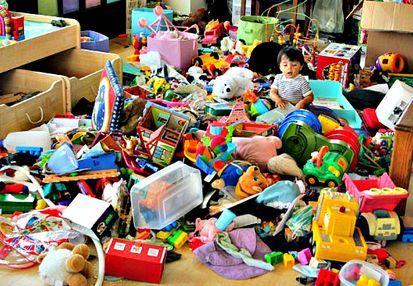
If this is you (and believe me, it’s me, too), you’re NOT alone. Whether your living space is big or small, or you have a dedicated play area or not, this is a struggle for most parents with young children.
But have no fear: when it comes to “you versus the LEGOs,” you can win the battle!
To help you get your home (and sanity) back, we turned to two professional organizers: Patty Clair (who also happens to be our very own Brit’s mom), and Rebeccah, owner of Whole House Cleanse (follow her on FB). With their ingenious, yet oh-so-simple organizational tips and tricks, you’ll have your play space in tip-top shape fast.
Ready to declutter? Here we go…

Where to Start
According to Rebeccah, the first step of any organizing project is knowing what you own.
“Inventorying a room full of toys might seem daunting at first, but it’s really just about exploring what is there, and it can be a really fun rediscovery.”
Rebeccah – Whole House Cleanse
For those of you who follow Marie Kondo, this is the infamous part where you have to come face to face with the sheer volume of stuff you own.
She explains that once you have everything in front of you, you can sort toys into categories — this will also help you determine which toys your little ones actually play with, which ones bring you joy or peace, and which ones drive you nuts. “From there,” Rebeccah says, “you decide what stays and what goes — I call this ‘owning intentionally’.”
How do you do this? Patty says that you can start by discarding broken items. Then, you can set aside those you’d like to keep but have missing pieces. If you don’t find the missing pieces by the time you’re done inventorying the room, Patty recommends letting it go.

“Collect all items that you want to donate/give away to friends or relatives in a separate box,” Patty says. “Lastly, set aside a box for things that are no longer age appropriate but that you want to keep — for sentimental purposes or future children.” After this step, she says, you should be left with ONLY the items you need or want in the space.
If you have a dedicated play space or playroom, Patty says you can model your kids’ play space after a kindergarten classroom, with different activity zones, such as a quiet reading zone, a dramatic play spot, a small manipulatives area, a craft/art space, etc., labeled bins and baskets with no lids.

Keep in mind this is completely dependent upon the space that you have to work with, but when the area is designed to be zoned for certain activities, it brings a sense of order to the room, as well as the ability to retrieve and return items to their rightful places.
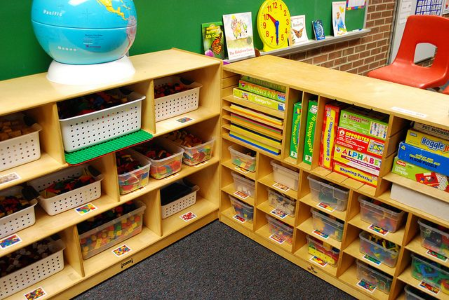
Keeping Small Toys Organized
Small toys (like those itty bitty Lego pieces, Polly Pocket dolls and accessories, action figures, or small matchbox cars) can be very challenging to keep organized. In my house, those are the toys that get thrown to the bottom of a big bin, shoved under the couch, or pushed to the deep, dark crevices in the corner of the playroom never to be seen again. So what’s the best way to keep track of our kids’ tiny toys?
Patty suggests using clear see-through shoe boxes with lids for all those little pieces you don’t want to lose. Small toys go in small boxes.
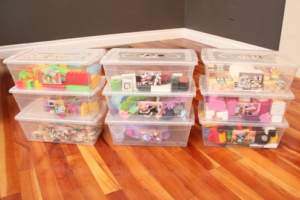
Even better, label the front of the box with what is inside — not just with the actual written name of the toys that you are storing in the container, but also with an image of them, she says.
Patty notes that any items you don’t want your kids to use unsupervised (i.e., crayons, paints, marbles, etc.) should go on higher shelves they can’t reach.
How to Store Big Toys (i.e. “The Eyesores”)
“I always tell people ‘the space you have is the space you have’,” Patty says, “so I remind them to consider what toys will fit into the play space and monitor their purchases accordingly.”
In other words, don’t go crazy purchasing the big plastic toys (you know, the slides, jumperoos, mini trampolines, etc.) if you don’t have anywhere to store them.
If your space is limited, Patty and Rebeccah both suggest bringing out one or two items at a time, and rotating toys every so often. In addition to limiting the amount of toys (big and small) that are all out at once, toy rotation can also be a great way to keep toys fresh. Kids may forget about their sweet walkie talkie set when it’s stored away, but when it comes back out, it’s like Christmas all over again!
Rebeccah also urges you to think about what you really want in your house. “I have a very tiny home, so we donated all our big train toys to my child’s school,” she says. “Now he gets to play with them there, but they aren’t taking up valuable space in my house. We also rely heavily on the Public Library and think of it as an extension of our home.”
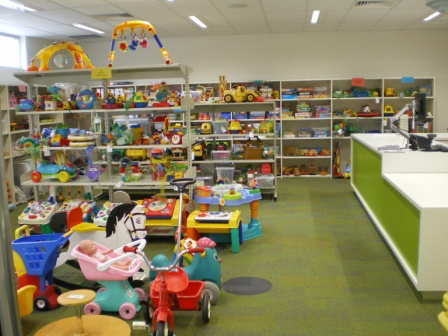
You get the gist: if you don’t have the space to store lots of big toys in your home, think about ways you may be able to “store” some of these toy experiences elsewhere.
Organizing Toys for Children of Different Ages
If you have kids of different ages, things can get tricky. Toys multiply at an alarming rate. Patty says it’s important to have a place for everything you want to keep and to create a space for each kid to play and easily access their respective belongings.
Then consider accessibility. You want to organize toys and games in a way that encourages independent play: older kids’ toys can go on higher shelves, while baby and toddler games can stay at crawling level. This will also ensure smaller toys that are hazardous to tiny tots stay out of reach, and it will also encourage independent cleanup.
Patty also says that “open storage units or cubbies (with or without pullouts) are perfect for storing all types of toys for each of the children. You can even designate certain color bins for each child to store their things.”
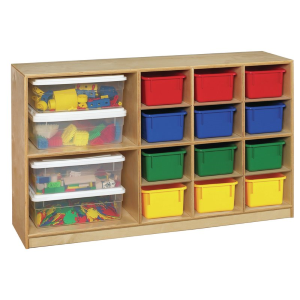
“I also often recommend each child gets a box for some of their memorabilia and/or sentimental items — like special artwork they have made and cards given to them, etc. This is a great way to teach organization, as well as how to keep track of the things they cherish.”
Rebeccah – Whole House Cleanse
Bulletin boards work well for this too. Our favorite styles are from Pottery Barn Kids:
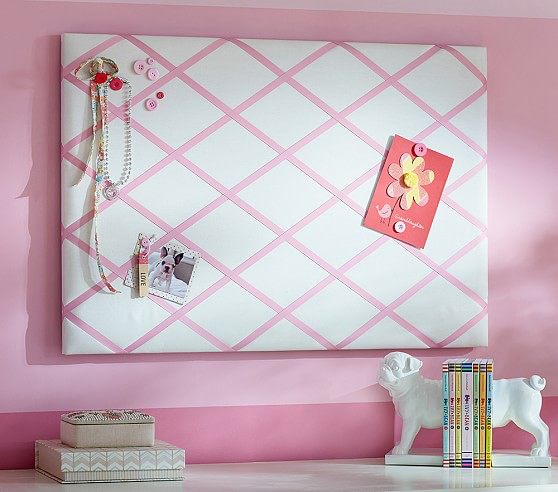
For kid’s artwork, you can get a simple memory storage box. This will also force you to keep only the best pieces of art (I know this is hard, but trust me — you cannot keep it all!).
Maintaining an Organized Playroom
Okay, so you’ve finally gotten the playroom clean and organized. Now how do you keep it that way?
Patty says that families should make organizing a part of each day and limit the number of toys their kids can take out at once.
“You can even establish small clean-up times for children throughout the day so that things don’t get out of control, and the process of putting everything back isn’t too overwhelming at the end of the day, when everyone is tired and it can become a battle of wills.”
Patty Clair
For example, you can have a clean-up that happens during lunch/naptime and another one that happens before dinner. This keeps things from getting too out of hand.
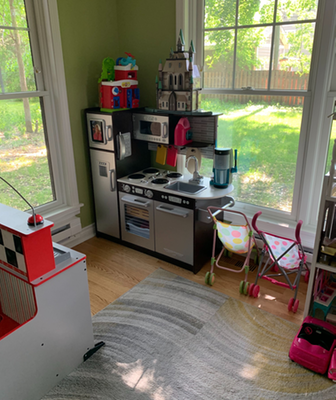
In addition, she suggests going through your kids toys on a routine basis. This way, the process of decluttering and organizing the play space doesn’t become this huge, unmanageable task you have to tackle once or twice a year.
Rebeccah goes further and encourages her clients to use the “one in, one out” rule: if your child gets a new toy, then an old toy that’s no longer played with must go. It’s that simple.
Storage Solutions for Small Spaces
If you don’t have a ton of space to store your kids’ toys — say you live in an apartment or a home without a dedicated playroom — have no fear. There are still plenty of ways to keep your kids’ toys organized:
1. Utilize Vertical Storage Solutions
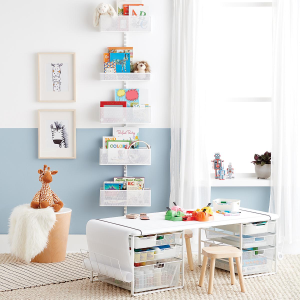
These keep toys off the floor and help maximize the space you do have. Plus, they allow you to store baby-friendly playthings on lower shelves, and older kids’ toys up higher. With this cute vertical personalized toy organizer (below), you can label each drawer by type of toy, or by child, if you have more than one.
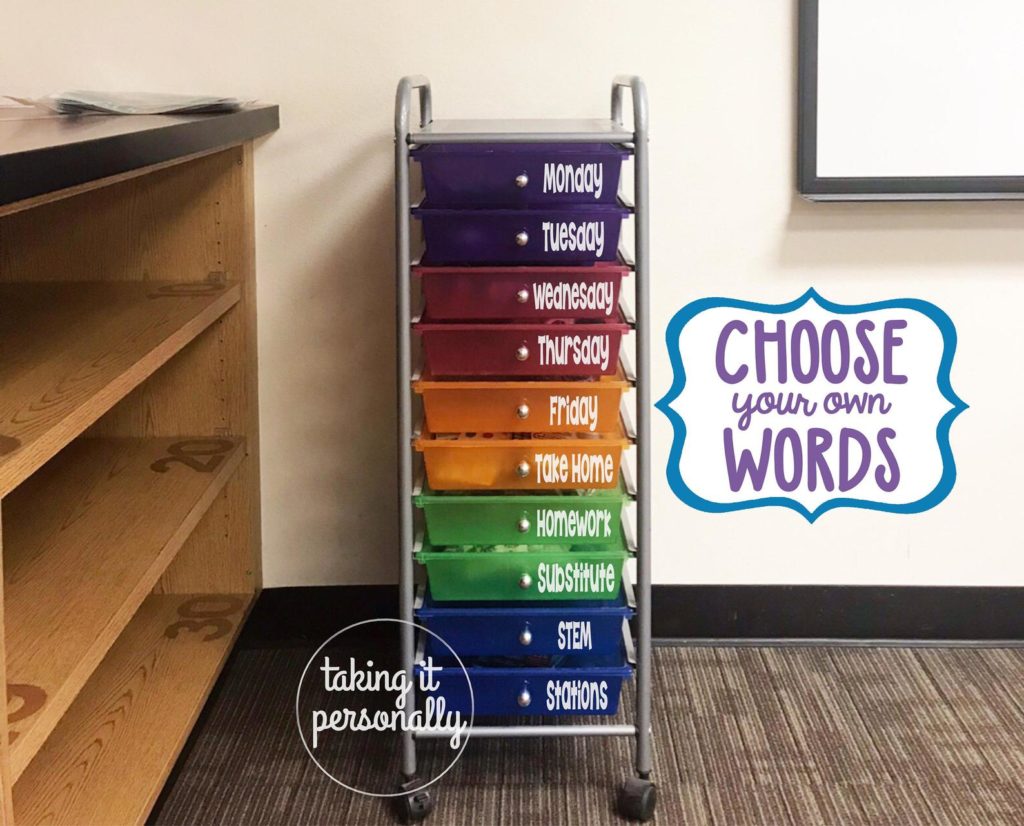
Another great option is this 3-cubby 2-bin vertical organizer. You can use it with or without the bins, depending on your needs.
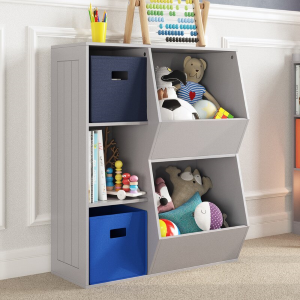
If you’re looking for something taller, check out this toy organizer from KidKraft. It’s over 4 feet tall and perfect for storing all kinds of toys.
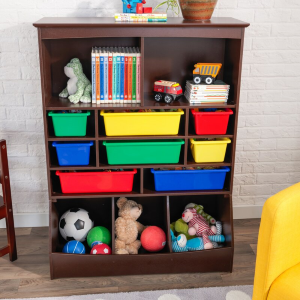
2. Seating that Doubles as Storage
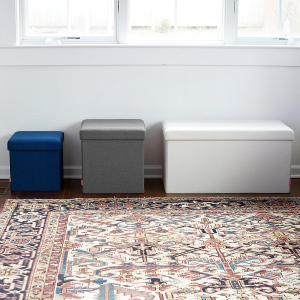
Storage benches, ottomans and cubes are awesome solutions when you’re low on space and heavy on toys! We love anything that serves double duty!
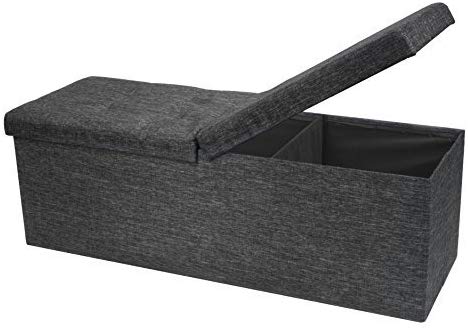
3. Toy Rotation
As previously discussed, it’s not necessary for ALL the toys to be out at once. Keep out the toys that are currently being played with, and store the rest away (if you have the space to do so). In a few months, switch ‘em out.
4. Utilize Wall Space
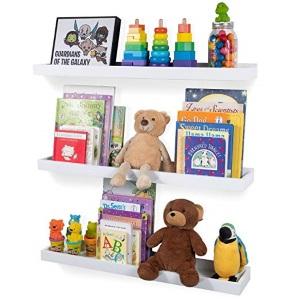
Don’t forget: walls offer valuable storage space, too!
Install wall shelving units, floating bookshelves, Montessori bookshelves, toy hammocks, hanging basket bins, and more.
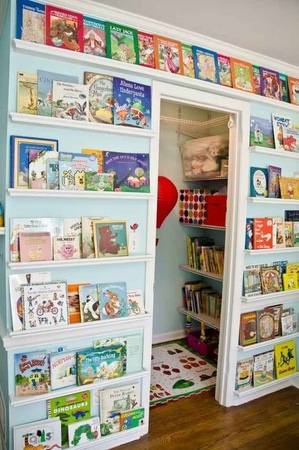
5. Over-the-Door Hanging Organizers
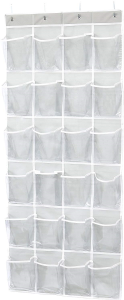
Over-the-door shoe organizers are not just inexpensive and easy to use, they are super versatile. You can stuff little toys (so many of them) in the pockets, and you can hang it on the wall or over the door. If you have larger items you want to store, like stuffed animals, diapers, blankets, blocks, you can opt for something like this (pic below), which has four larger pockets with clear windows.
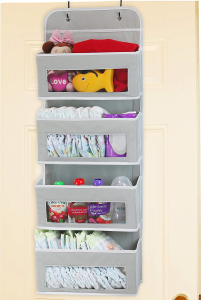
6. Storing your Kids’ Artwork
Your kids make the sweetest artwork — from scribbles on pieces of paper, to pics of dragons and unicorns, to all the works of art they bring home from school. You want to keep it all (because, of course, all their art is special…and also you would feel like the worst parent on the Earth if they found all their projects in the trash…gasp!). But let’s get real — that’s a lot of paper to hold onto. Instead, we suggest snapping pics of your children’s art, and then creating a photo book of all their masterpieces.
You can also use a company like Plum Print or Artkive. You mail them your kids’ artwork (in a prepaid box provided by the company), and they create a one-of-a-kind “portfolio” of your child’s work. Cool, right? This way you can guiltlessly keep hardcopies of the really special stuff, and toss the rest — in a hidden garbage where they’ll never find it!
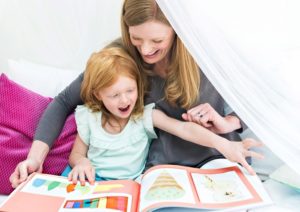
Involving the Kids
Though organizing the playroom with your kids may seem like a pain — and yeah, it may take twice as long with their, um, “help” — both Patty and Rebeccah say it’s a great idea to get them involved.
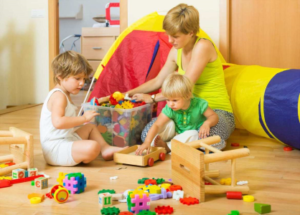
“It’s a great teaching tool to help children learn to be responsible for their belongings and to respect their play space. And I truly believe that children of any age can be given age-appropriate responsibility for helping with family chores, including making decisions about the toys they like to play with, as well as taking care of their toys and putting them away.”
Patty Clair
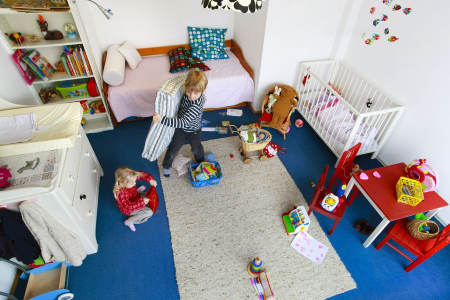
Rebeccah notes that getting kids involved also helps them take stock of, and responsibility for, what they have. In addition, parents can encourage their children to start a “donation box” — a box of toys their children no longer play with and would like to donate to other families. This way, you’re not just teaching them how to keep their things organized, but you’re also teaching them the importance of being charitable.
Storage Gear: What You Need
Our experts agree that there are no “must-have” pieces of organizational furniture that you absolutely need to create a clean and decluttered play space. Both agree that what works best is entirely dependent on families, their needs, their space and their budget.
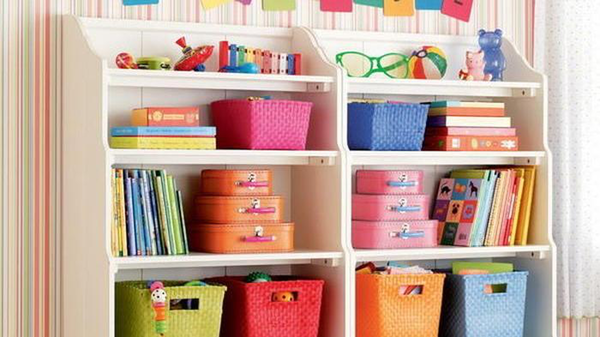
“There’s no one-size-fits-all solution,” Patty says. “But I am a big fan of repurposing furniture and tools. For example, if you have a bookcase that you no longer use in one room, you can move it to the playroom. It’s economical and eco-friendly!”
Rebeccah agrees, but also adds that her favorite storage items are open-top baskets or bins. “They are so versatile and come in a wide range of colors and designs,” she says. “Plus, they make for simple organizing — all you have to do is reach into the bin for a toy, or toss toys into their respective bins at clean-up time.”
Rebeccah shares her favorite organizational items:
1. Drawer dividers: These can really help organize any playroom drawers or bins. I’ve used expandable bamboo kitchen/utility drawer organizers and mix and match felt organizers.
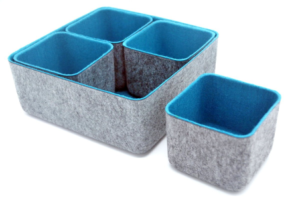
On a creative budget, I’ve even used top and bottoms of sturdy boxes from iPhones (and other small gadgets) as dividers.
2. Creative art supply storage: I love using a clear, divided lazy susan to organize and display kids’ frequently used art supplies.
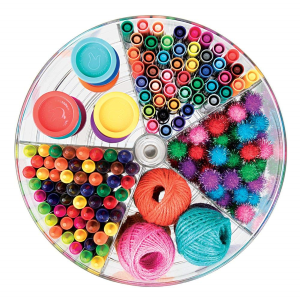
3. Cube/cubby shelves are a favorite: Each cube can be its own section for whatever you have — books, bins/baskets of toys grouped by category, game/puzzle boxes (I recommend storing these vertically, like books, so each can be accessed without taking a whole stack down). Some popular units are Clybourn shelves from the Container Store and IKEA Kallax, but you can find cube/cubby shelves from many different stores and at every price point.
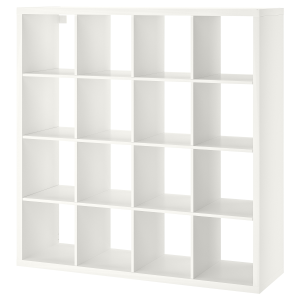
4.Mini-photo printer: A splurge (~ $130) but a fun way to photo-label shelves or bins for kiddos who can’t yet read.
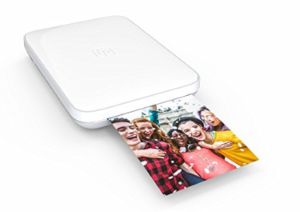
5. IKEA Trofast: Another favorite shelving system that is customizable by depth of bin. You can fill the deeper bins with stuffed animals and the shallow ones with smaller toys, such as Legos, blocks, toy cars, etc.
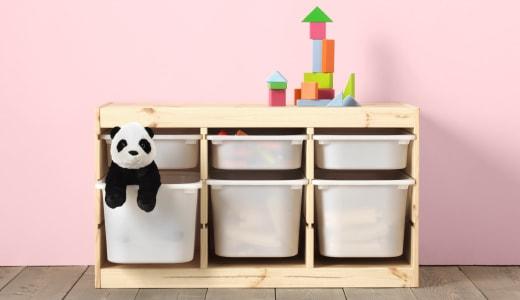
Final Thoughts
Don’t let the toys migrate. “Recognize that your entire house does not have to be a play space,” Patty says. “Set limits as to where your children can play with their toys.” Don’t feel guilty about having adult spaces that are just for adult things.
Rebeccah adds that what she loves about getting organized is that it can inspire meaningful, thought-provoking, lifelong family conversations. “We get to talk with our kids about the value of our belongings and what’s important to us.”
She explains that each family is so different, and the organizational process allows families to really define who they are and what they’re all about. They get to decide together what they want the rooms in their house, and the experiences they have within their house, to look and feel like. “This is fun, inspiring and limitless” Rebeccah says.
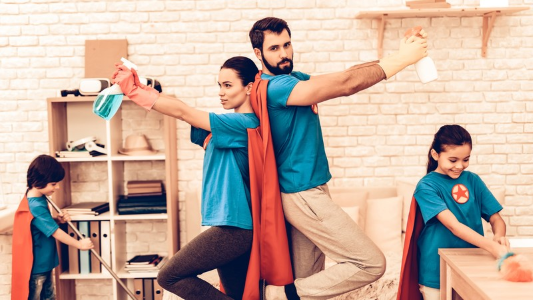
There you have it. What I love about these tips for keeping the play space organized is that they are NOT overwhelming, and totally doable. And just like anything else with parenting (and life!), it doesn’t have to be perfect. It just has to fit your family’s needs and help you keep your sanity (so, you know, you don’t lose your ever-loving mind every time you walk into the overgrown forest of toys, crumbs and junk that has become your kids’ play area). As both Patty and Rebeccah mentioned, this can and should be a family affair — everyone should participate in keeping the play space clean.
We’ll end here with a list of our favorite stores to buy affordable organizational gear. If you don’t want to buy new, you can always hit up your local consignment store — or even Goodwill/Salvation Army.
Do you have any awesome tips for keeping your play spaces in order? Please share them in the comments below!
Happy organizing!
See Also:
Amazing article..
Where is that cute little desk from in the vertical storage solution photo?
I should have included that! So sorry! It’s from the Container Store, and it’s the Elfa Kids Playroom Storage
Pro-tip: Don’t just label the front – label the front and back so it won’t matter which direction the containers go on the shelves! 🙂
Great tip! Thank you for sharing!
Any toddler proof containers to keep art supplies in?
Hi Amanda!
I’ll ask our experts — but I believe any plastic bin that has clicks and locks closed would work well.
I must say you have very interesting content here.
[…] Toy Storage Ideas Experts Offer Toy Organization Ideas. Toy Storage Ideas From The ExpertsOur Simple Toy Organization Guide Is Perfect For Small Spaces Designated Play Spaces And Everything In Between. lucieslist.com […]
[…] toy storage ideas experts offer organization kid art tables. source […]
[…] toy storage ideas experts offer organization girl organizers. source […]
[…] Toy organizers are different from toy chests because the latter is best for storing large toys and things that are infrequently used — chests don’t do a great job of actually organizing toys. Organizers come with multiple compartments and make keeping and categorizing toys much more streamlined.” Read more here […]
[…] less stuff, toy organization and storage — not to mention daily CLEAN UP — become imminently more […]